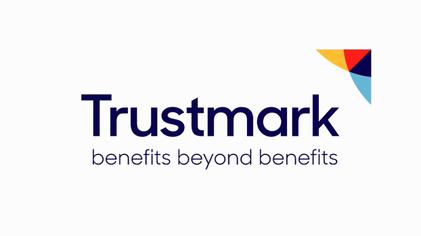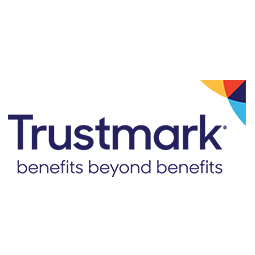
Voluntary Benefits and the Millennial Customer

Generational marketing has been a buzz word for years. But in reality, differences and similarities can exist within the same generation, just as they exist across generations.
Segmenting communications
Marketing and messaging is not as easy as it once was because different generations may be experiencing the same life events at the same time. For example, a 30-year-old millennial and a 39-year-old Gen Xer may have both just had babies, gotten married, or purchased a home for the first time.
Something to keep in mind when communicating: focus more on the individual, as an important life event may appear across multiple generations
Prime customer
As millennials are getting older, starting families, and acquiring more debt, they have become a prime customer for voluntary benefits. In fact, in the next two years, millennials will comprise 75 percent of the workforce.
This group is still the same independent, tech-savvy, driven individuals we all are familiar with, but as they’ve aged, stepped further into their careers and entered into parenthood, they are even busier than they once were. With all the distractions out there, how do you break through and get millennials to pay attention?
So, who are millennials?
- Average household income? $50,000- $100,000
- Single vs. married? 60% married, 40% single
- Children or no children? 49% children, 51% no children
Communicating to millennials
What makes them purchase? Millennials care about:
- Peace of mind
- Responsibility (e.g. the responsible thing to do)
- Value of the product
- Employer’s financial contribution
- Convenience of buying at work (i.e. payroll deduction)
What makes them not purchase? Millennials do not care about:
- Details of the plan
- If they’ll ever need it
- If it covers the gap in medical (this was rated the lowest among this group.)
So, what does this mean?
When you are planning your enrollment communications, be sure to create messages that resonate with this segment. Focus on the value, the peace of mind that millennials will receive, and the responsibility fulfilled by purchasing a product like accident or critical illness, for example. They don’t care as much about statistics, and they don’t understand what a “gap” is in terms of coverage. If you do decide to venture into communicating those topics, be careful to explain and educate as much as possible.
Employee Engagement & Message Preferences
Engagement
When it comes to message delivery, our research shows that multiple communication touchpoints are effective. And, in fact, three distinct touchpoints were most effective.
On average, top communication channels for pre-promotion included:
- Digital content distributed by employer
- Printed material distributed by employer
- Face-to-face with HR or benefits rep
3 Touchpoints
The magic number is three. Employees remembered and appreciated benefits more when they saw three distinct communications. Less or more communication had diminishing returns.
Among employees who recall seeing at least three different sources of information to make their enrollment decisions:
- Nearly 3 in 4 (72%) rated themselves “likely” or “very likely” to recommend their employer, based specifically on their benefits program.
- Compared to just half (52%) who used two or fewer types of benefits communications.
Since employer contribution is one of the top reasons millennials purchase, and face-to-face enrollments are a top channel, use this as an advantage. Make employees aware of how much the employer contributes, the number of benefit options available, and how those options fit into an employee’s personal situation. This method is also a great way to communicate other key messages like 401(k), wellness programs, benefit changes and more.
Communication Preferences
There is a disconnect between how millennials are typically provided information and how many would choose to receive it.
Regardless of millennials’ love for technology and digital communication, when it comes to decision-making time, they don’t always prefer technology-driven communications.
It is true that they grew up and are comfortable with technology; however, research shows they may only prefer that channel out of convenience, (i.e. to find information quickly or update preferences). But, when it comes to insurance, and the importance and significance of healthcare and life policies, they would much rather talk to someone.
In fact, what one may think to be the top ways a millennial would want to connect with a financial representative—online on the company website or through social media—are actually the two least used channels.
Top channels used for assistance:
- Meeting in person
- Calling a representative
- Emailing a representative
- Online chat
Millennial Purchasing Preferences
The more employers offer in terms of benefits, the more millennials buy. This is a win-win, as it makes employees appreciate their employer more and it helps retain employees at the same time.
On average, nearly 40 percent of millennials purchase four voluntary benefit options (this does include options for dental and vision). And, on average, they are happy with their benefits, especially the more they take.
Top products purchased?
- Life
- Accident
- Short-term disability
- Long-term disability
- Critical Illness
40% of millennials purchase four voluntary benefit options.
Millennial Purchasing Preferences
51% would recommend their company because of the amount of options.
In fact, 51 percent would recommend their company because of the amount of options offered to them, as they feel their employer cares about them. Specifically, employees rated those employers a 6 out of 7 or a 7 out of 7.
What about combo products like universal life with long-term care?
Although they are more affordable and that’s a key selling point to this generation, the fact still remains, millennials need to understand what a combo product entails. You could have the best products in the world, but if millennials do not understand them, or see the value, they aren’t buying them.
Things to remember
Communication and education are keys to the enrollment process for any generation, but especially important among millennials. Using a multi-pronged, multi-channel approach with access to one-on-one assistance could be the answer. Millennials want to know that the product will provide value, make them feel like they checked the box on responsibility by purchasing (so to speak), and provide reassurance for their financial stability.
A three-communication channel approach provides more value to the employee than less or more communications. So, don’t over- or underwhelm employees. At the same time, be sure to offer a good amount of benefit options, because more options increase employee satisfaction.
Communication and education are critical components of the benefits and enrollment process. To learn more about how you can use a multi-pronged and multi-channel approach more effectively within your company, view this whitepaper from Trustmark Insurance Company.


